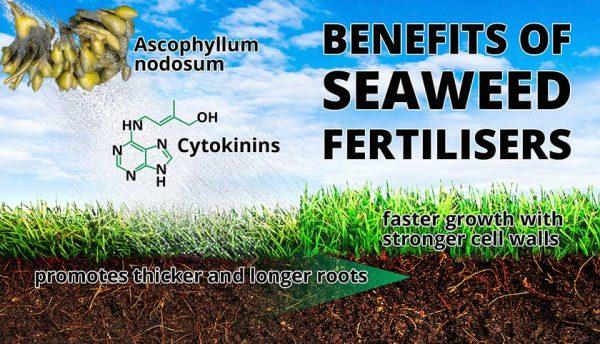Seaweed Fertilisers - What are their benefits
Seaweed fertilisers are a fantastic organic option for those wanting to improve the health of their plants or turf. At ProGreen, many of the seaweed fertilisers we stock are created using the sustainably harvested Ascophyllum nodosum cold water seaweed. This is a slow-growing, large, brown macroalgae found in the clean, clear waters off the Irish North Atlantic coast. The Ascophyllum nodosum seaweed variety is well known for boosting overall plant health due to the micronutrients and macro nutrients, e.g.: Magnesium, Potassium and Nitrogen it possesses.
Why should seaweed fertilisers be used?
There are many reasons why seaweed fertilisers should be used. When many people think of seaweed they think of it as being extremely salty however this is not the case. Seaweed used in fertilisers is rinsed so does not contain a sufficient amount of salt to damage crops or soil but just enough sodium to actually benefit soils for healthy grass growth.
To begin with, seaweed is a biostimulant that is rich in trace elements. This helps to promote thicker and longer roots allowing the plants or turf to have greater access to water and nutrients. A variety of areas can benefit from the use of seaweed such as lawns/turf, vegetable patches and flowers. The use of seaweed can improve resistance to disease, pests and abiotic plant stress (the effect the weather and drought have on plants) as well as increasing crop yields!
The seaweed within these fertilisers contain Cytokinins. Cytokinins are a natural plant growth hormone. They draw nutrients into the tissue while stimulating more lateral plant growth making this extremely important for new growth. If you apply seaweed fertiliser at the following stages the Cytokinins will have these effects:
- Rooting formation – stimulates the division of more root cells
- Vegetative growth stage – causes plants to grow faster with stronger cell walls
- Fruiting and flowering stage – encourages more buds to develop for better overall fruit and flower production
Alginates are also present within seaweed fertilisers. Not only do these help to improve the structure of clay soils, they also increase microbial populations. An increase in microbial populations is important as it aids in improving soil health and plant growth.
How to use seaweed fertilisers
As seaweed fertilisers are available in both liquid and granular forms, there are different ways that they should be applied.
If you are using a dried seaweed fertiliser, such as Amvista Seaweed Meal, it can be applied to grass, turf or grazing paddocks using a granule spreader. It can also be broadcast direct and incorporated into soil around plants or in planting holes.
When using liquid seaweed fertilisers, such as Amvista L9 or Maxicrop Original, it is important to remember to dilute the product with water following the specific application rates on the product label. Applied to plants it is best used as a soil drench on a regular basis to promote soil microbial activity and support the plants natural defences. Once diluted down, the product can be applied using either a knapsack or boom sprayer for an even application.





